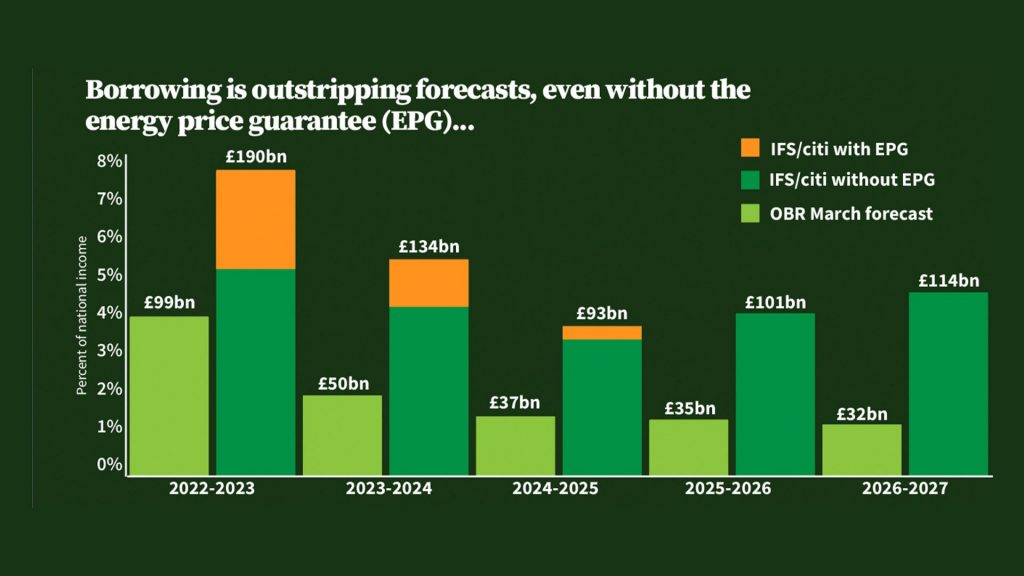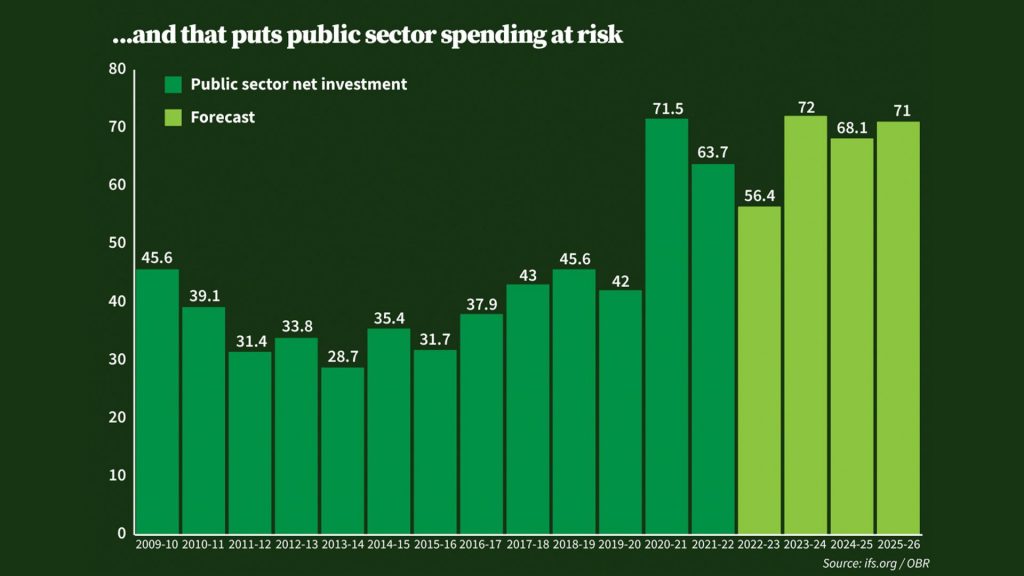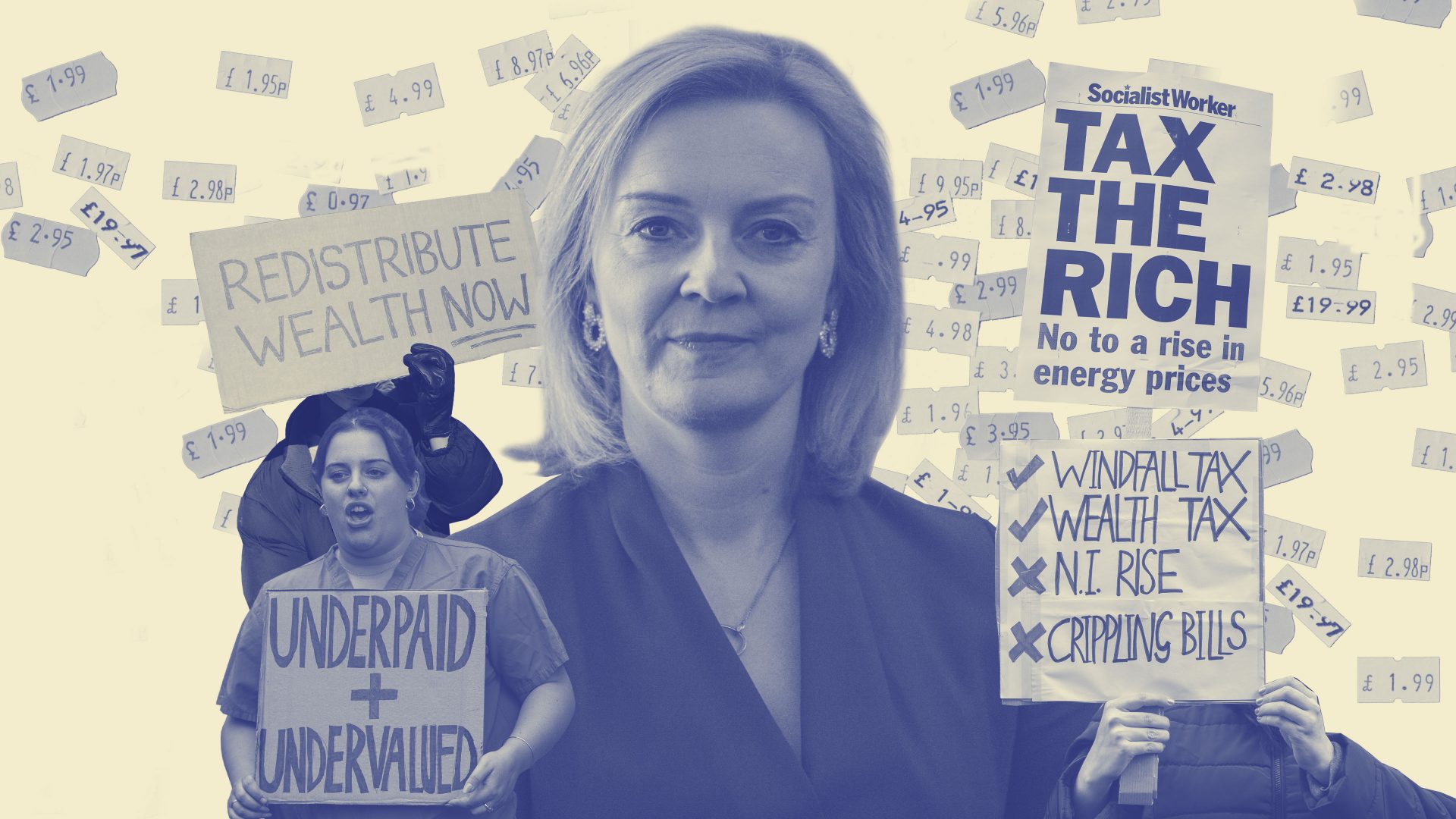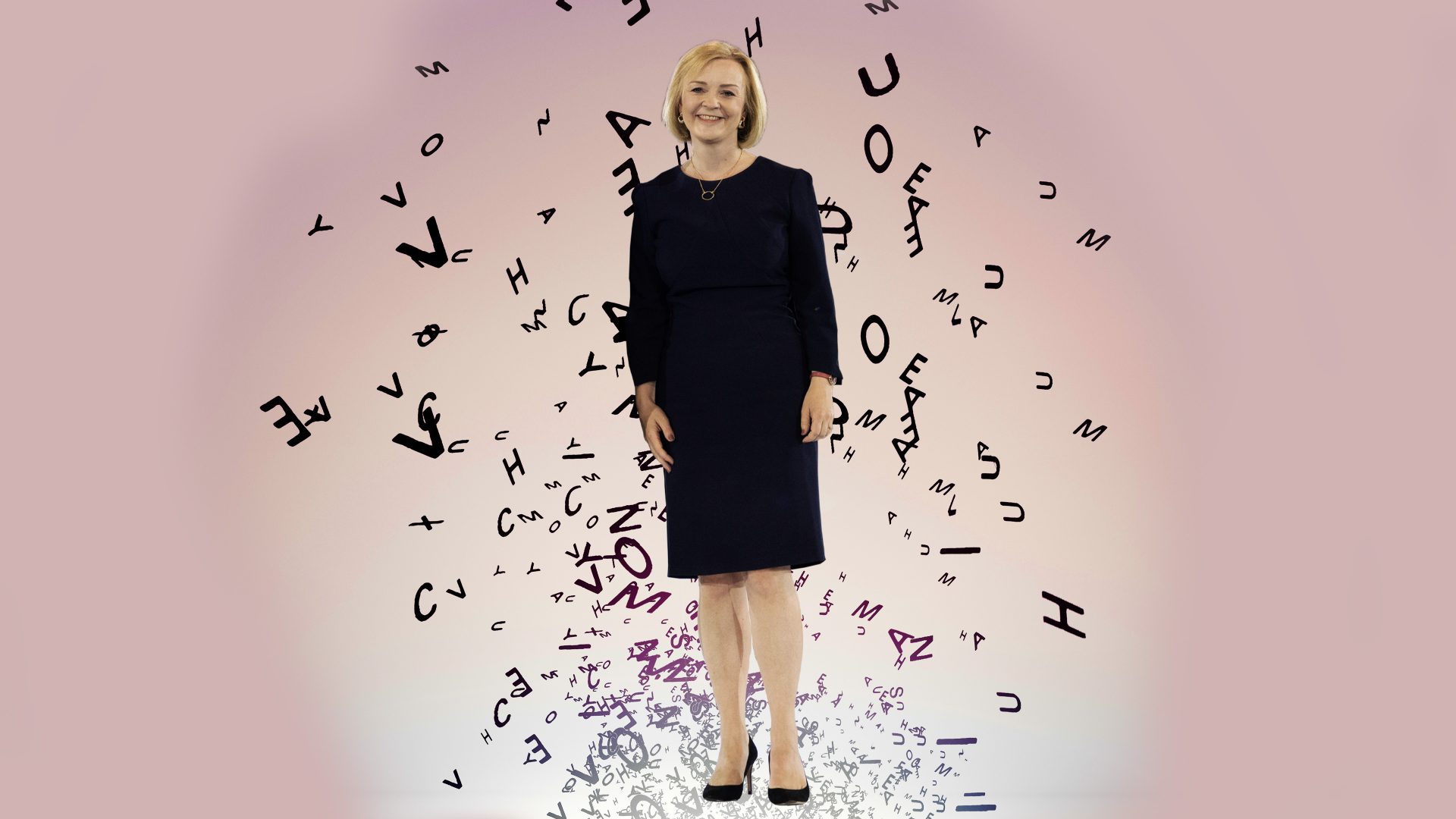The mini-budget that almost trashed the economy and successfully trashed Kwasi Kwarteng’s reputation was only supposed to be the start. Despite all the guff from their think tank chums about rocketing growth paying for itself, the government’s next move after cutting taxes was always going to be to fund it by cutting the size of the state.
Whatever remains of Kwarteng and Liz Truss’s plans now the grown-ups have intervened to reshape them, cuts remain the only option left – whatever the rebels think. The markets have already shown that they cannot borrow unlimited amounts, and not even this chancellor would try to put taxes up to pay for tax cuts.
The plan to drop the 45p top rate of tax lasted just over a week before its stupidity, heartlessness and economic incompetence was exposed. The chancellor has had to reverse at full speed in perhaps the most embarrassing climbdown in British political history. There may be more mea culpas on the way – can the end of the cap on banker bonuses survive?
But let us not sigh with relief too soon. Cutting the top rate of tax in a cost-of-living crisis with borrowed money was just the last straw. The other tax cuts, including reversing the rises in National Insurance and corporation tax, cost far more – in fact they make up £43bn of the £45bn total.
That money was all borrowed too, as was the money to help with winter fuel costs, and it is still all borrowed money; nothing has changed.
Some of Truss and Kwarteng’s fellow travellers in what was recently trying to sell itself as the party of one nation and the red wall are even licking their lips at the thought of new austerity. Simon Clarke – who is, remarkably, now in charge of levelling up – told the Times this weekend that Britain was “living in a fool’s paradise where we can be ever less productive relative to our peers and yet still enjoy a very large welfare state.”
Kwarteng, Truss and their dwindling band of supporters now recognise their biggest mistake was to put all the tax cuts in one mini-budget and give no idea about how to pay for it. Arrogantly, Kwarteng even refused to have the Office for Budget Responsibility check his figures or to mention a single revenue-raising measure, or even to say how large borrowing would get.
The markets took one look at his half-hour presentation and immediately began selling pretty much everything with a Union Jack on it.
It tells you all you need to know about the abilities of the chancellor that his next move was to say he needed another eight weeks to find out how to balance the books and to let the OBR make its judgment. That deadline looked unlikely to last almost as soon as it was set, leaving Kwarteng racing against the clock to find the savings that would pay for his farce.
And the scale of the savings required is staggering. Depending on whether the chancellor wants to return borrowing to what it was predicted to be a few months ago or just, as the Treasury is now promising, to get “borrowing falling over the medium term” will make a huge difference, but either way the cuts will be massive.

The Institute for Fiscal Studies calculates that UK borrowing is now on a permanent upward trend. It will soon top £100bn a year, and is rising; that is even after excluding the emergency energy bailout this winter. The rising cost of borrowing caused purely by the chancellor’s idiocy will also make that debt burden even harder to carry, as higher interest rates, set by the Bank of England to try to bring down the very inflation Kwarteng is stoking, make government debt far more expensive to service.
So, if you look at the IFS chart, by 2025-26 when the final fuel support costs have fallen out of the calculation, the government would need to find cost savings of £66bn just to get back to the borrowing level promised by Rishi Sunak earlier this year. The following year the gap is even larger, at £82bn, and the trend will continue. This is what really spooks the markets.

On top of that, defence expenditure is not only ringfenced but due to rise by 50% by 2030 – that’s another £50bn a year. And the government is promising further tax cuts.
Where can the spending cuts possibly be made to pay for all this? Clarke says “there is always something you can do to trim the fat”, but after the years of austerity the UK has had to endure, you might think there is no more fat to be cut. And you, not Clarke, would be right. These will be cuts to the bone and beyond.
That’s because £82bn is far more than one-third of the cost of the NHS and social care, or more than the entire education budget. These savings are almost impossible to imagine and may well destroy the welfare state.
To be clear, this has always been the aim. The UK and its government have been taken over by the ultras who have always wanted to take down the welfare state, the department of business, green measures, the unions, environmental protections, workers’ rights and the NHS. For them this is still the perfect opportunity to do just that, and they have already started.
One of the few ministers to put his head above the parapet last week was the chief secretary to the Treasury, Chris Philp. He has already told departments that although their allocation of taxpayers’ money was predicated on 3% inflation, they will get no more money to make up for what is now 10% inflation. That is an immediate 7% cut in the cash available to run schools, the NHS, the armed forces and everything else.
But a spending freeze at a limit well below inflation will not go anything like far enough. There will have to be huge cuts on top of that and they have to be in the big-spending areas; social care, education, benefits, the NHS, pensions and quite possibly investment.
Education, where spending on state schools has been frozen for years, will face even larger cuts. The NHS and social care are next.
As the former deputy governor of the Bank of England Sir Charlie Bean told Sky News, the scale of savings necessary will have enormous consequences for the public sector. “If you want to get the share of government spending to GDP down, you have to be prepared, say, to move away from our own health service, which is free at the point of delivery, to one funded by social insurance like they do in Germany.”
Benefits will also be slashed by failing to keep up with inflation. Remember that in his mini-budget Kwarteng said: “We will make work pay by cutting benefits.” That couldn’t be much clearer. Now he says it is too early to say whether benefits will rise in line with inflation next year, as promised by Sunak. Enough said. Those on benefits are going to see them destroyed by inflation.
Then of course there are pensions. The triple-lock guarantee for the state pension was reinstated by Sunak earlier this year. This guarantees to increase the state pension every year by either consumer price inflation, the level of average wage growth, or 2.5%, whichever is higher. Kwarteng made no mention of it in his budget; now he is keen to hint it will survive. He may be stupid but not THAT stupid – pensioners vote in large numbers.
But there is one large almost painless cut that would save the government tens of billions a year. If it halved spending on investment and infrastructure, it could save more than £30bn a year. A few lost construction and technology jobs wouldn’t be noticed. Oh, except for one little thing. The mini-budget promised to bring forward dozens of such projects to improve efficiency and productivity, and therefore growth.
Quite right: investment does help growth, tax cuts for millionaires don’t.
So why is the government risking all this pain, misery and destruction? Because it thinks, despite all the evidence to the contrary, that slashing the state will boost growth, that if only it can hold its ground for a few months or years we will all realise that it is right and everyone else is wrong.
Growth will soar as the wealthy get richer, tax revenues will flood in, allowing for more and more tax cuts, the country will become a beacon of free enterprise, entrepreneurship, and hard work. The state will shrink and we will all come to realise that it was holding us back and that we are free to create a new dynamic, global Britain.
No one outside the Tory ultras’ echo chamber believes this guff, but sadly the Tories are still in power.
But the markets are not stupid. The further down this suicidal road the Tory Party leads this country, the more they will sell the pound, raise the cost of borrowing and bet against the government.
It is a no-brainer. They cannot lose, but we all will.




